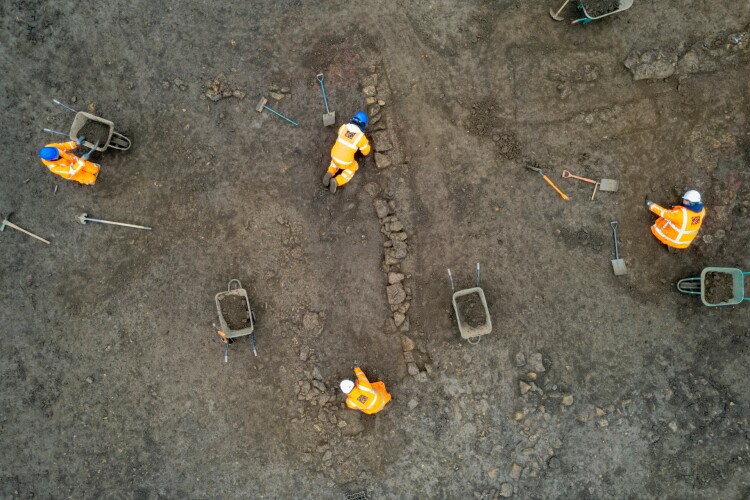Developers might seem like unlikely benefactors of archaeology but in reality a significant proportion of ancient discoveries in the UK are unearthed as a result of commercial construction.
Last month, the largest Roman mosaic discovered in London for more than 50 years was uncovered during the excavation of the Liberty of Southwark regeneration project – a scheme comprising homes, shops, restaurants and workspaces. The painstaking work of recording, assessing and carefully transporting this “once-in-a-lifetime find” off-site will now begin.
Perhaps the biggest unveilers of our hidden histories are HS2 and Crossrail, which over the years have uncovered rare statues, plague burial pits, and earlier this year, an entire Roman town sat underneath Northamptonshire.
These finds are undoubtedly exciting discoveries for those passionate about history and conservation but for developers it can be something to dread. While they may benefit from the initial publicity surrounding a discovery, ultimately they associate it with one thing: costly delays. Failure to properly allocate risk in the contract can add to an already complex problem. So, how should this be managed?
Tips for developers: research and contingency
For developers, the risk mitigation strategy should start well before construction begins. Developers should try to reduce the risk of surprise archaeological findings by undertaking research and commissioning specialist site surveys at the pre-construction phase, which may include advice from archaeological consultants.
HS2 provides an example of where pre-dig consultation resulted in a change to the proposed works. After consultation with the Battlefields Trust and Historic England, the rail route was slightly adjusted to avoid cutting through the known location of a still-buried ancient Roman villa.
Developers should also set aside a contingency fund to deal with the costs of unforeseen ground conditions. In addition, they should understand at tender stage whether the contractor has reflected the risk of archaeological findings in their tender price and in the timescale for completion.
Contract risk allocation
A bigger question remains of who should bear the increased costs associated with archaeological findings and the risk of delay. Developers should obtain legal advice on contract risk allocation regarding this and other unforeseen ground conditions, and whether it is appropriate to try to shift the risk onto the contractor.

This might be something that the developer wants to do if they have the strength of bargaining power but careful consideration is needed as to whether that is the most sensible approach. The contractor will likely factor that risk into the tender price, by charging more, and into their programme by extending the timescale for completion.
Rather than simply relying on information provided to it by others, a prudent contractor will want to undertake its own research and site surveys to assess the risk of adverse ground conditions, including the risk of unearthing archaeological findings.
The other big consideration is that if the works are to be undertaken in a location where research suggests there is a strong possibility of an archaeological find, then contractors might be deterred from bidding for the work in the first place if the delay and cost risk of archaeological findings sits with them.
What does the contract say?
If there is no mention in the contract of how any archaeological findings should be managed, then the default, common law position is that the contractor will bear the risk.

Under the JCT Standard Building Contract and Design & Build Contract 2016 Editions, there is an “antiquities” clause that expressly addresses how archaeological findings are to be dealt with. In summary, the contractor’s compliance with the antiquities clause and with any instructions that are issued under that clause could entitle them to an extension to the completion date and to claim for loss and/or expense from the employer.
It is therefore crucial that developers using these JCT contracts undertake appropriate research pre-contract and have a contingency fund in place, as the contractor is likely to be entitled to both time and money where delay is caused to the works due to an archaeological discovery on site.
In short, with forward planning and expert advice, the risks associated with quite literally hitting historical gold during your development can be managed effectively.
Got a story? Email news@theconstructionindex.co.uk



